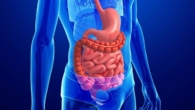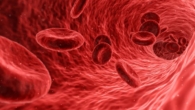
Scientists have found that losing weight depends on the brain, not just willpower
0
What if magnetic resonance imaging could determine whether a weight loss program would be effective? Researchers at Ben-Gurion University of the Negev (BGU) have discovered a neural sub-network of connected regions between the brain and the basal electrical frequency of the stomach that correlates with future weight loss based on connectivity patterns.

The results of the BGU multidisciplinary group confirm the widespread neural theory that people with an increased nervous reaction to the sight and smell of food constantly overeat and gain weight.
“To our surprise, we found that while higher control functions, measured in terms of behavior, were the dominant factors in weight loss, this was not reflected in the brain interaction patterns,” says Gidon Levakov, a graduate student who led the study from BGU’s Department of Brain and Cognitive Sciences. “So we found that weight loss is not just a matter of willpower, but is actually related to much more basic visual and olfactory cues.”
Study
The team assessed 92 people during an 18-month weight loss course led by Professor Iris Shai from BGU’s Department of Epidemiology. Participants were selected based on large waist circumference, abnormal blood lipid levels and age.
Before the intervention, the participants underwent a series of brain scans and behavioral tests of executive functions. The participants' weight loss was measured after six months of dieting, which, according to Professor Shai, is usually when maximum weight loss is achieved.
“It seems that visual information may be an important factor in triggering food intake,” says lead researcher Professor Galiya Avidan from the Department of Brain and Cognitive Sciences and Psychology at BGU. “This makes sense, given that vision is a primary human sense.”









Leave a Reply